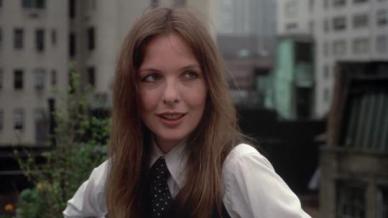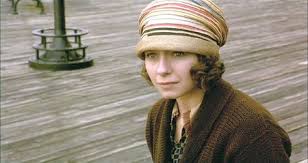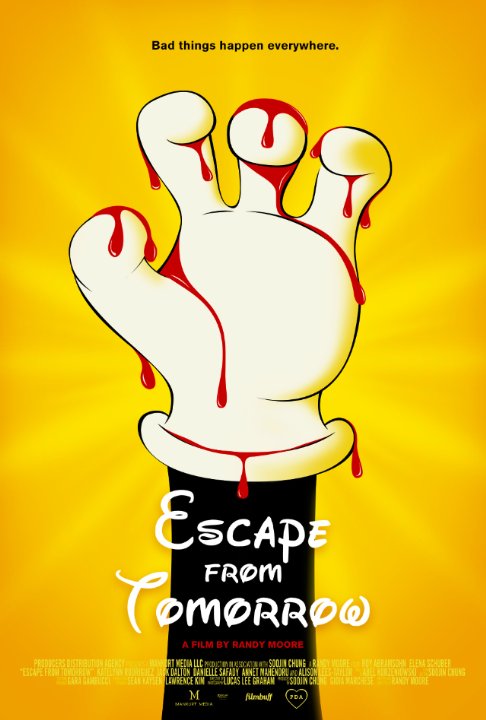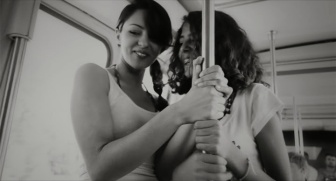Turns out the insurance business is a hell of a lot more interesting than most of us think.
Between the wise-cracking salesmen, the dangerous women, the tough-as-nails claims adjusters, and all the schemes, twists, and intrigue, it’s no wonder that premiums tend to spiral out of control.
Or at least that’s the impression you get from Billy Wilder’s deliciously-fun Double Indemnity.
Based on a 1935 novella by James M. Cain—which, in turn, was based on a famous murder plot perpetrated in Queens, NY, in 1927—Double Indemnity is the story of a successful, fast-talking, low-character insurance salesman, Walter Neff, who falls for the wrong woman and gets tangled up in a plot to murder her husband for the insurance payoff. When the woman, Phyllis Dietrichson turns out to not be the abused, innocent victim that she initially appeared to be, things spiral fatally out of control for Neff.
From the first frame to the final image, Double Indemnity is a pulsating popcorn thriller, through-and-through.
It took nearly a decade for Double Indemnity to make the leap from story to screen, primarily because of the then-controversial nature of the material. Although a studio bidding war erupted shortly after the publication of the novella, it ended quickly when the infamous Hays Office began strictly enforcing the “moral guidelines” of the Motion Picture Production Code. Although codified in 1930, the so-called Hays Code was not aggressively enforced until circa 1934, and when the Hays Office got wind of the bidding war over the rights to Double Indemnity, it issued a stern warning to the major studios.
“The general low tone and sordid flavor of this story,” Hays Code enforcer Joseph Breen wrote, “makes it, in our judgment, thoroughly unacceptable for screen presentation before mixed audiences in the theater. I am sure you will agree that it is most important…to avoid what the code calls ‘the hardening of audiences,’ especially those who are young and impressionable, to the thought and fact of crime.”
Eight years after Double Indemnity’s first flirtation with Hollywood, Paramount tried again, buying the rights to the film and eventually getting a film treatment approved by the Hays Office. The project was then handed off to writer-director Billy Wilder, who collaborated on the screenplay with Raymond Chandler, then a first-time Hollywood screenwriter. Chandler was only a few years removed from his breakout first novel, The Big Sleep, but even Wilder (rightly) credits much of Double Indemnity’s success to what would soon become Chandler’s trademark gift for crackling, amped-up dialogue. “Yes, I killed him,” Neff confesses in the film’s opening scene. “I killed him for the money and a woman. And I didn’t get the money, and I didn’t get the woman. Pretty, isn’t it?”
It wasn’t just the Production Code that threatened to derail Wilder’s movie, though.
None of the three leads—Fred MacMurray as Neff, Barbara Stanwyck as Dietrichson, and Edward G. Robinson as hard-boiled claims adjuster (hard-boiled claims adjuster!) Barton Keyes—actually wanted to be in the film.
MacMurray and Stanwyck, both already box office stars, objected to playing such seedy, unseemly characters. In fact, MacMurray wasn’t even the studio’s first choice, but after Alan Ladd, James Cagney, Spencer Tracy, Gregory Peck, Fredric March, and George Raft all turned the role down, MacMurray became Wilder’s last resort. Eventually, through sheer force of will, Wilder signed both his leads, also securing Robinson despite the actor’s misgivings about playing what amounted to a supporting role for the first time since he became a star.
As it turns out, Double Indemnity is the best film that any of them ever made.
Double Indemnity rolled through Madison last week as part of the Turner Classic Movies’ “TCM Presents” series. To my discredit, I’d never discovered Wilder’s classic before, but 70 years after hitting theaters for the first time, Double Indemnity still feels as fresh and engaging as any new release you might find at the multiplex. Highly stylized, fast-paced, and ruthless, the film hooks you immediately with the first-scene appearance of Neff, who mysteriously stumbles into his insurance office, wounded and struggling, and spills his sordid story into a Dictaphone machine. From there, his confession spools out in voice over, and the film never slows down.
Part of the fun of Double Indemnity is watching the two leads, especially MacMurray, play against type. For someone who grew up knowing MacMurray primarily as the lovable father on My Three Sons and as the Flubber-inventing hero of The Absent-Minded Professor, it’s a delight seeing him play the snake-charming, amoral insurance salesman Walter Neff.
But as a life-long film buff, the wonder of finally catching up with Double Indemnity is seeing what many critics (though not all) identify as the first real example of American film noir, and seeing so many of the classic elements of noir come together on screen for the first time. The unseemly characters whose lust and greed set the wheels in motion for their own inevitable destruction. The stylized lighting and masterful mis-en-scene that pull you into the characters’ hearts and minds. The rat-a-tat-tat dialogue that slips from seduction to scheming without losing a beat.
And oh that femme fatale!
Stanwyk’s treacherous blonde seductress rivets from her first appearance on-screen, getting her hooks immediately into Neff with demure, playful allure. Like Neff, we go right along with her for the ride, slowly discovering her devious motives, her malicious intent, and ultimately her double-crossing plot. By the time he figures out the truth about her, his fate has already been sealed, and all that is left for him to do is to stumble through the final act of his deadly tale.
“Suddenly it came over me that everything would go wrong,” Neff mutters in voice over. “It sounds crazy, Keyes, but it’s true, so help me. I couldn’t hear my own footsteps.”
“It was the walk of a dead man.”
























